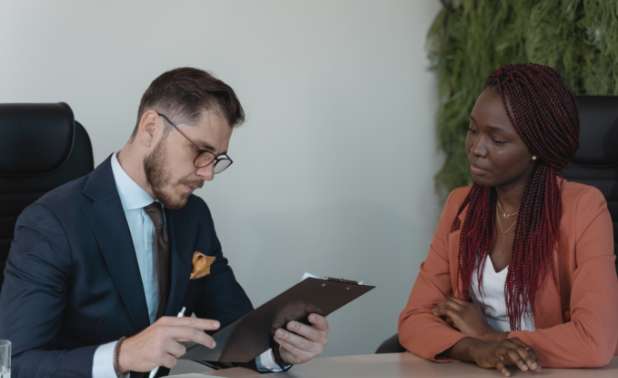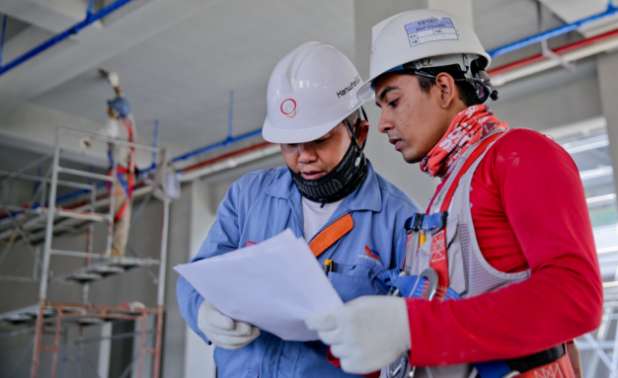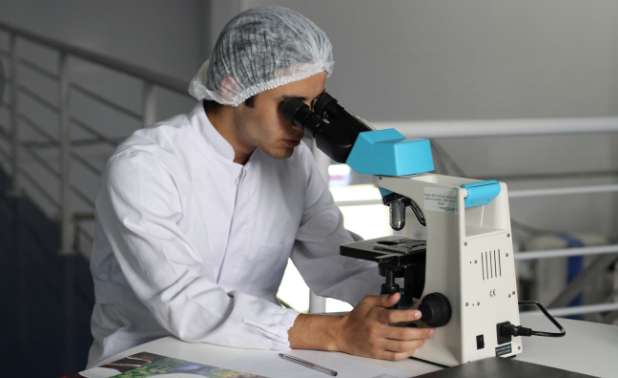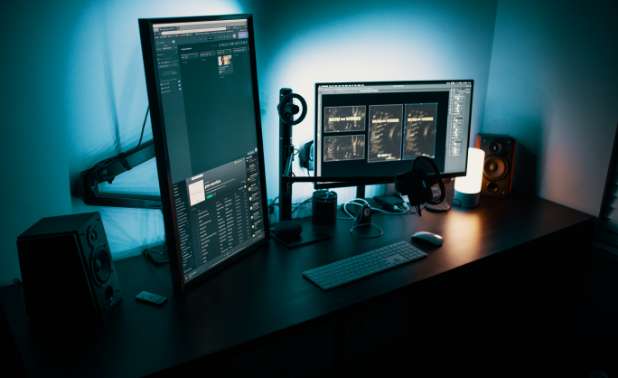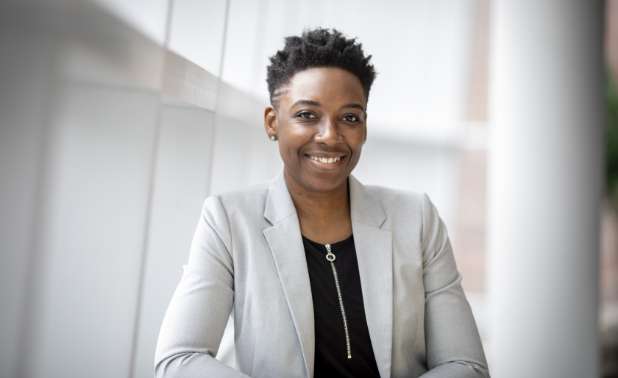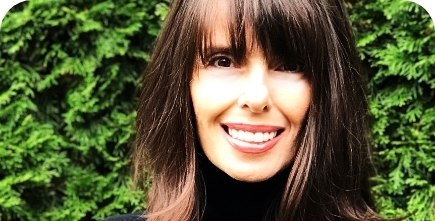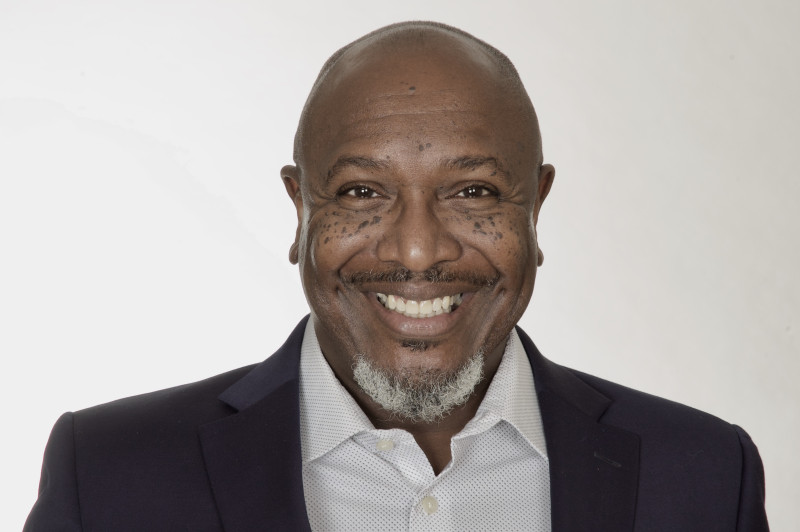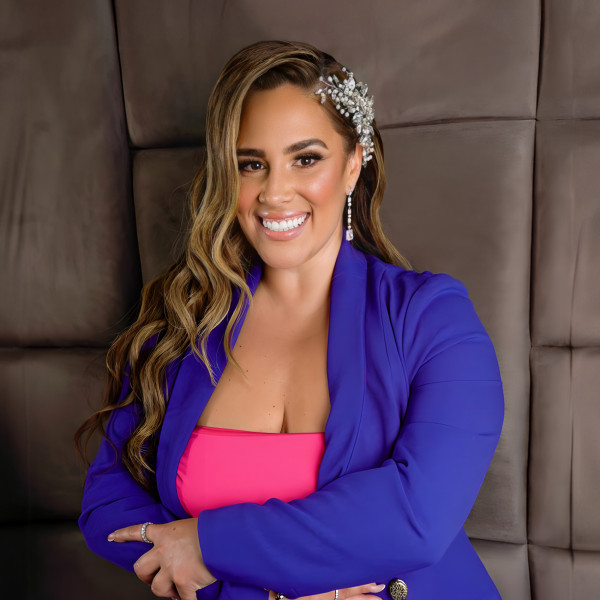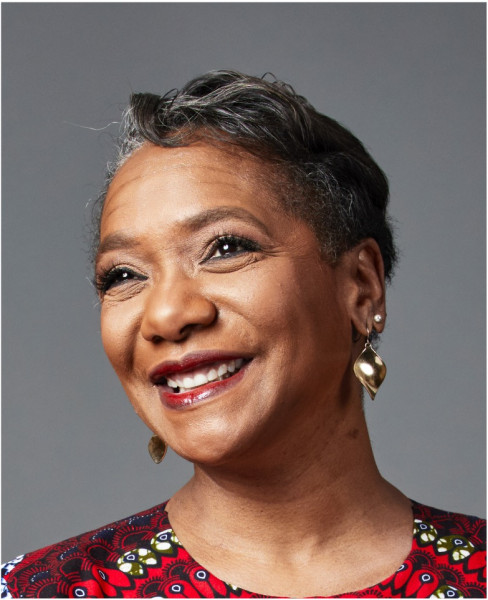Kamela Forbes:
Welcome to But First, People, a podcast by Pride Global that dives into the remarkable diversity of the
world of work. I’m your host, Kamela Forbes, and in this episode, I had the pleasure of speaking with Diana
Mirakaj-Finnerty, Head of US at Specialisterne. Specialisterne is a non-profit organization that empowers
individuals with autism and neurodiverse conditions access meaningful employment opportunities. Founded in
Denmark in 2004, Specialisterne has since expanded globally and partnered with companies such as Microsoft,
JP Morgan Chase, and SAP to create inclusive workplaces and promote the benefits of hiring individuals on
the autism spectrum.
Diana oversees the strategic direction, manages partnerships with businesses and organizations, and raises
awareness about the unique skills and abilities of individuals on the autism spectrum. Diana has been a
featured speaker at conferences and events like the National Autism Conference and Neurodiversity at Work
Summit. And our insights on neurodiversity and the work of Specialisterne have been published in media
outlets such as Forbes, Fast Company, and NYBC News. In this episode, we explore ways in which companies can
create more inclusive environments for neurodiverse individuals, the importance of recognizing and valuing
different types of cognitive diversity and the benefits they can bring to a team. Diana, excited to have you
here. Welcome to the show.
Kamela Forbes:
Okay. So Diana, as you might know, our signature for, But First, People podcast is to have our guests kick
us off with a song. And I love to sing. I’m like karaoke queen, but one of the real reason behind it is
really to get our guests comfortable, to have you relax. Although it might not feel like you’re relaxing if
you’re not really into singing, it’s really about getting real and getting raw, getting honest. And so we
want to open up and get ready for this episode to just be as authentic and inviting to all of our listeners
as possible. So with that, what song are you going to sing for us today?
Diana Mirakaj-Finnerty:
I am going to sing “Barnyard Dance” by Sandra Boyton.
Kamela Forbes:
All right. Should be a good one.
Diana Mirakaj-Finnerty:
I hope so.
“Stomp your feet. Clap your hands. Everybody ready for a barnyard dance. Bow to the horse. Bow of the cow.
Swirl with the pig if you know how. Bounce with the bunny, strut with the duck, spin with the chickens. Now
cluck cluck cluck, the baa, and a moo and a cockle doodle doo. Everybody promenade two by two, prance with
the horses, skitter with the mice. Swing with your partner once or twice. Stand with the donkey, slide with
a sheep scramble with the little chicks. Cheep, cheep, cheep, with a nay and a moo and a cockle doodle doo.
Another little promenade, two by two, trot with a turkey, leap with a frog. Take another spin with the
barnyard dog. Turn with the cow and a patch of clover all take a bow and the dance is over with an oink and
a moo and a quack, quack, quack. The dance is done, but we’ll be back.”
Kamela Forbes:
Oh, I love that. I got to tell you, I have a seven-month baby girl at home, and so I’m listening to a lot of
Baby Einstein recently and that sounds like something I would hear and we got to get to learning. So that
was a pretty fun song, Diana loved it. Loved it.
Diana Mirakaj-Finnerty:
Thank you.
Kamela Forbes:
And as we dive right in here, I want to talk about the work that you’re now doing with Specialisterne, which
is a global organization that helps businesses to assess autistic and similarly neurodivergent job seekers
by designing and implementing more inclusive hiring and management practices to advance workplaces that
employ different thinking. But previously, you also taught courses on career development and integrated
independence to a population of neurodiverse students. So clearly you’re invested in helping neurodiverse
talent. So can you tell us what is your why? In other words, what inspires you and drives you to do the work
that you do every day?
Diana Mirakaj-Finnerty:
The why is actually directly connected to why I chose the song that I did. It brings me back to what will
very quickly be 23 years that we’ll be celebrating my nephew, Paul’s birthday. The song is something that I
used to sing to him when he was a baby, and it’s not meant to be a song, it’s just a child’s book. But much
to the dismay of my sister when it was supposed to be a bedtime story, I would sing it in a very animated
fashion and keep him awake when he should have been going to sleep. But Paul is autistic and he is just the
love of our lives, and he has been an inspiration to become involved in this. This was not something that I
was involved in my past career, but in these last few years I was extremely privileged to become a part of
something that my sister was involved in, which was a post-secondary program in a local Westchester College
because there’s not enough that was being done in the education field.
If you are autistic, if you are neurodivergent and you go through a traditional path and you are going for a
bachelor’s degree, that’s fine, but if you are college capable, there are not that many programs out there.
So she did something to start a program and he was in there and I had the opportunity to get involved and it
changed the trajectory of what I was going to do professionally, and it was the best move I ever made. So am
I invested in it for personal reasons? Yes. Am I now invested in it for professional reasons? Absolutely.
And I never want to look back because it’s been the most rewarding thing ever.
Kamela Forbes:
Well, that’s what the key to life is, right? You put your personal and your professional passions together
and you feel like you never work a day in your life they say.
Diana Mirakaj-Finnerty:
Absolutely.
Kamela Forbes:
Well, it’s so key. You mentioned a term in there, neurodivergent and neurodiversity, neurodivergent is a
fairly new term. Can you explain what it means and maybe what conditions fall under that term?
Diana Mirakaj-Finnerty:
Absolutely. So when we think of diversity, we tend to focus on gender diversity, women in leadership,
visible minorities or racial or ethnic diversity, and these types of diversity are often visible. Yet there
are many different levels of diversity and many are harder to see. And just as there are many types of
diversity, neurodiversity is no different. So we’re talking about a concept and an understanding that there
is diversity or difference in the way that our brains work and process information. So neurodiversity refers
to natural variations in the human brain, including autism, ADHD, dyslexia, dyspraxia, and other
neurological conditions such as OCD, Tourette’s and learning disabilities. And each distinction can bring
value in a new or different way of thinking, approaching a situation or solving a problem. So what we do is
we cover that entire... it’s literally spectrum, and all of these different conditions fall under the
umbrella of neurodiversity.
Kamela Forbes:
Okay, that’s great. I know people use the term, but it’s so great to have that clarification on what it is
and for people to be able to use it correctly. When you think about that then, what would you say are some
of the common misconceptions about neurodiverse individuals? And maybe you could share with us how we could
challenge and maybe overcome some of them.
Diana Mirakaj-Finnerty:
Of course. So sadly, there’s still so many, but instead of focusing on the negative, we highlight the
capabilities and competencies of neurodivergent individuals. And we do that through education and awareness
because the most effective way to myth bust is by providing opportunities for people to ask questions they
may not have had the correct information on before. Part of diversity and inclusion, and it’s important for
employers to recognize the benefits that their organization can realize is by offering strength-based
opportunities for autistic and neurodivergent individuals in all industries. And this means expanding beyond
math and technology and Kamela, I’m sure you’ve heard of before the traditional STEM roles and it’s what one
of those misconceptions is that that’s the bucket that all neurodivergent people fall into. So we want them
to branch out and offer opportunities beyond that and accommodations and modifications for all types of
positions.
But due to repeated portrayals in media, autistic people are often considered only capable of highly left
brained analytical work and unable to manage jobs with any social interaction or the need for empathy and
the tendency to have what is known as a “spiky profile.” And it’s a blaring misconception and one that could
not be further from the truth. So neurodivergent people can work in all sorts of fields-- hospitality,
warehouse, education, health services, retail, manufacturing, the same way that any neurotypical candidate
would be able to apply. It can go beyond anything that is only centered in STEM. So while technology and
financial services industries have certainly taken the lead in hiring, training, and retaining
neurodivergent employees, we’re seeing other sectors raising their heads and their hands to step forward and
we love that. But when it comes to employment enablement, we’re greedy. We want more, more opportunities for
more people and new industries and job families so that more misconceptions are going to be overcome and
that companies can really recognize the true benefit of inclusion.
Kamela Forbes:
I love it. And one of the quotes that I know that I’ve heard a lot of is that if you’ve met one person with
autism, for example, then you’ve met one person with autism. And I think that’s just exactly what you have
explained. It doesn’t matter. You could work in any industry because every individual is different, just
like neurotypical individuals are different. We all have different skill sets. You just have to look at an
individual as an individual, evaluate their skillset, and understand what role they would best be suited
for.
Diana Mirakaj-Finnerty:
Absolutely.
Kamela Forbes:
So then let’s talk about Specialisterne. How can you all help companies explore that qualified and untapped
talent pool of neurodiverse talent to be able to fill all of these different positions you just
mentioned?
Diana Mirakaj-Finnerty:
Well, let’s just get started. Just call us. So while we have a talent pool that remains largely untapped, we
know firsthand at Specialisterne that inclusion is good for business and that businesses that hire autistic
or neurodivergent talent experience enhanced productivity, performance, stability, innovation, employee
retention, customer loyalty, all of those great things that make organizations run more effectively. But in
order to tap into those benefits, businesses have to create more inclusive workplaces. Those workplaces have
to be more adaptable. They have to be creative and collaborative. And leadership, managers, and teams all
need to be open and flexible to tackling a lot of the communication and the policies and practice barriers
that really become the main obstacle to what is an inclusive workplace. So before we can get to that, we
have to really look at what creating that workplace looks like and the adaptations and the adjustments that
are made so that supporting one employee becomes supporting all employees.
And I think historically, so much of those barriers have been: “What is the cost going to be? Is it going to
be too difficult for all of our employees? How do we tackle this?” And instead of stepping back for a second
and just saying, "Where do we get started? How do we get help to do this," it becomes this monumental
challenge and we can’t look at it that way. We have to take it not just as a step-by-step. This isn’t about
baby steps, it’s more a point of it’s not altruism, don’t look at this as meeting quotas. Look at it now as
how we approach doing something from an exchange of information, building mutual understanding, and
proactively addressing issues so that we can create a universal design that actually makes sense from an
organizational standpoint.
And then as a result, you are accessing this incredible talent pool of people that you’re not just doing
something because, "Oh, we’re doing good." We’re actually tapping into this incredible competency set of
individuals who are going to be able to improve your overall company. And yes, it’s a bottom-line issue and
it’s an effectiveness issue, but it’s also now 85% underemployment and unemployment rates that have to be
managed in a better way.
Kamela Forbes:
Yeah, I love it and I think that just falls exactly into maybe your tagline at Specialisterne, which is
“Employed Different Thinking.” It’s really about just thinking about how do we...what policies and
procedures or what things can we put in place that will benefit neurodiverse individuals but ultimately will
benefit everybody? And I think that there are certain things, and I know we recently had Specialisterne in,
and did a disability inclusion training and workshop seminar with our employees, and it was phenomenal. I
think some of the feedback that we got from a lot of people was it was just so eye-opening to realize that
to your point, you don’t have to necessarily invest millions of dollars in changing your whole
infrastructure. There are small things that you could do that make a big difference to not only neurodiverse
people, but that it’s just general that everybody could benefit from. So maybe you could share some of what
are maybe some small things that organizations could do to create a more inclusive environment for
neurodiverse talent, but ultimately, everybody in the workplace.
Diana Mirakaj-Finnerty:
We have legislation through the ADA that aims to eliminate societal barriers, for example, of people with
disabilities who continue to face those type of challenges every day. And it obviously includes employment.
This is where we focus on. Currently, the neurodiversity prevalence rate is 15 to 20% globally. And I think
that the CDC just changed the rate of autism in the US. I think it went from 1 in 44 to maybe 1 in 36. On a
global scale, that reflects 1.8% of the population. So unemployment for neurodivergent adults runs at least
as high as 30 to 40%, which is three times the rate for people with a disability and eight times the rate
for people without a disability. And I’m not going to belabor the point from a data standpoint, but breaking
that down, that’s where we’re looking at that number of an unemployment rate of around 85%.
And those with ADHD are 11 times more likely to be unemployed and 61% more likely to lose a job. So my
reason for really stressing that is when I say we have to do better as a society and organizationally across
the board partnering, we have to partner with one another. I’m such a huge believer in collaboration and in
really believing that, I’m not saying that right now Specialisterne is the one that’s going to do all of
this. Organizations like us working together with companies that employ large numbers of individuals, we all
have to work together from an education standpoint, from an awareness standpoint, and then from actual
meaningful employment enablement, we have to create a different level of engagement so that we can break
down and knock down that number. So let’s get back to the societal barriers. When we think about disability,
we need to think about non-apparent or the not obvious ones and think about how a person learns,
communicates, and processes information such as autism or a learning disability or ADHD.
When we think about accessibility, we need to think about physical spaces, environments, and then consider
how some of the invisible barriers may prevent a neurodivergent person from participating fully in their
community or their workplace. We walk into an office and we just go about doing what we do. Not everyone
does that. And the reality is each person over the course of their lifetime may have a change in their
circumstance that they become disabled. So if we look at it from that purview Kamela, our lives can change
at the drop of a dime. No one is promised tomorrow will look like it does today. We have to think
differently. So Specialisterne identifies five core types of barriers, physical or architectural. An office
may have narrow corridors that can’t accommodate a wheelchair, poor lighting for someone with low vision,
someone with sensory sensitivities, sounds, smells.
Are those being taken into account? Information or communications, written information not in plain
language, it’s not easy to read, videos that are not captioned or do not have transcription, those are
requirements. Attitudinal, you asked before, misconceptions. If we make an assumption about something, we
shouldn’t. You don’t know what’s going on in someone’s life. You don’t know what their challenges are or
what they’re dealing with. So the attitudes that people have, an autistic employee is less safe on the job.
People with autism are less productive. Why would we make that assumption? My ask, if you’re going to assume
something, assume competency, assume that they can do it, be wrong about that. You’re probably not going to
be wrong, but go ahead and make that assumption. Technological, devices, software, technology platforms that
are not accessible, a website that doesn’t meet accessibility requirements. Microsoft is doing incredible
things here.
If you’re on LinkedIn, you can’t throw a rock without seeing Microsoft now really making a big push to point
out how much accessibility they have in all of their features. We have to push for these things to make sure
that they are available to everyone so that everyone has the accessibility features they need to be able to
engage on a technological level. Policy or practice. This is where things really become very delicate.
Most organizations operate in a way with their policies and HR practices that are meant for everyone. It’s a
catchall. Everyone must go through a pre-screening and competency test in the same way, resumes, et cetera.
They’re not fair. There is an unconscious bias that happens when you assume that everybody can process
through that same screening. We have to change that, and that’s what we’re trying to do. And so many
organizations are embracing that and they’re understanding that it’s not fair for everyone. And some people
may rebut that and say, "Well, life’s not fair." We have to make it a little bit more equitable now. So a
positive shift in any of those behaviors can change a person’s life. A shift in all of them will change the
lives of many, and that’s the direction that we really want everyone to go in. So that’s how we make it more
neuroinclusive.
Kamela Forbes:
I love it. There’s so many great examples. And like you say, you don’t have to do all, do some. Make an
effort. And the little bits that everybody could do, if we all take a little bit, we’ll ultimately get to
where we want to be.
Diana Mirakaj-Finnerty:
Exactly.
Kamela Forbes:
So thank you for such a nice actionable list of things that people can walk away from and implement. And I
guess out of a lot of that you just mentioned, what would you say are some of the best or most successful
neurodiverse, inclusive initiatives that you’ve seen a company implement?
Diana Mirakaj-Finnerty:
We have seen a shift in a number of our client environments, and we refer to our clients as
employer-partners. As I mentioned before, partnership is so critical because there is an excitement that is
very notable because it’s not just about hiring. We’re not a recruitment firm. We don’t come in and just
bring people and hire them. And it’s about a shift in mindset. So you mentioned before our tagline is
“Employee Different Thinking,” and it is that because it’s not just about the different thinking, as I
mentioned earlier, that neurodiversity is minds that think differently. It’s about the mind shift of the
employers as well. They’re thinking differently. They’re looking at what the benefits are. It’s hiring
people who think differently. It’s trying a different approach. It’s broadening the perspective of what this
brings to the organization. People get excited. Something that I like to think about is some of our employer
partners are becoming extraordinary in how they embrace neurodiversity inclusion and also in how their teams
are becoming a different... they’re becoming a different environment because they’re seeing how excited
their hiring managers are becoming and their team leaders are becoming.
It makes them different in their approach to leadership. In the beginning, you may have had companies that
were a little reticent on how this was going to work. Now you have arms that are going up and being raised
to say, "I have job requisitions I want to fill in this way." And that’s the difference. That’s the success
of these programs because it goes from being a standalone program to just part and parcel of how HR works
now. And this is included, it’s inclusion. I mean, it’s the actual definition of the word.
It’s not a side program anymore. It’s front door. And that’s where we see the transition. And it’s really
wonderful. We have conversations and I’m not going to say the names, but we have discussions about “how can
we build a talent pool, how can we create a talent pool?” And that that’s Christmas morning. I mean, that’s
when this is wonderful. Our goal is to not be needed. Our goal is to be there to answer a phone if there’s a
question about how to tweak a program or how to tweak different practices or ”what else can we do? How can
we make this bigger?” But when you start having discussions like that, that’s when how exciting this has
become now within an environment and it’s no longer a, "How do we this?" It’s “How do we now make it even
bigger?”
Kamela Forbes:
Yeah, I love it. And like you say, it’s just about getting more people on board to do it. And when you start
seeing that become the standard way of thinking instead of that kind of maybe niche way of thinking that the
work is making its impact.
Diana Mirakaj-Finnerty:
Exactly.
Kamela Forbes:
I think one of the key things is about having allies right, in this space. Can you share some specific
examples of what someone can do to be an ally?
Diana Mirakaj-Finnerty:
Ask questions. If you work, and I’m looking at this specifically from a workplace environment, ask your
colleagues how to best communicate with them. In a lot of our sessions and in a lot of our workplace
environments, what we find so often, which is why education of the colleagues is really important, often an
assumption is made that we’re just there to support the new employee. We’re there to support the colleagues
as well, because communication is critical. Ask about language, ask about what preferences are, ask
questions and approach conversations with curiosity and be patient and give time to people on how things are
going to be processed. Seek out opportunities to learn about neurodiversity and hear about those
perspectives from the individuals with lived experience. It’s so easy to just say, "Well, I read a book."
Well, that’s great. The book doesn’t speak back to you. The book is, they’re words on a page.
And while no one is ever going to fault you for the effort, there’s a person there who is going to be able
to answer to your direct questions. No one is going to be offended by that. Years ago, I mentioned at the
top of the call, my nephew, 20 plus years ago, there was so little information. There is so much now. You
are able to have dialogue, have the dialogue, get involved in those workplace initiatives. If you are in one
of these organizations that really nurtures these types of relationships about inclusion, support it,
consider being a mentor. If you have the ability to do that, give back in that way, it will make you a
better colleague. It will make you a better manager and it will fulfill such a need. And remember that so
many disabilities are not... they’re not apparent. When we talk about invisible disabilities, you don’t know
that they’re there. So approach relationships with patience again and curiosity, and it’ll make a better
workplace for everyone. True allyship is championship, and there’s always an opportunity to be that.
Kamela Forbes:
I love that. True allyship is championship. And I think, Diana, just to go back to what you just said in
terms of everybody is an individual, and so while you might read something on the paper, that’s not specific
to your direct report, to your teammate, to somebody that works in your organization, so how about having
that conversation with them directly so that they can tell you what they need specifically because it might
be different from what somebody else on a page or reading something in a blog. That’s something different
that they need. So I think that’s really important about speaking directly to the people within your
organization and on your teams.
Diana Mirakaj-Finnerty:
Yeah, agreed.
Kamela Forbes:
Well, we know that there’s so much that the progress that’s been made, so much more progress that can be
made. But I’m excited that there are organizations like Specialisterne that are there to help support and
help us along the journey. And you have been phenomenal over the years, like you say, just kind of tapping
into your personal motivation for this, you’ve made such an impact over the years, but what would you say,
Diana, that you want your legacy to be in this space?
Diana Mirakaj-Finnerty:
I want to continue making some type of impact that will cut back that 85% number. I want to continue
building programs with the team that I am very fortunate to be working alongside, and I want to make sure
that, not to quote a line from this book, but “the dance may be over, but we’re going to be back and that
everyone is invited to the dance," because there was not an animal that was left out of this story that I
was singing. So for anybody that did not have their hands over their ears, everyone should be invited to the
dance. Everybody should be included.
Kamela Forbes:
I love it. I love it. Thank you so much for sharing all of your pearls of wisdom with us, for sharing your
personal connection to the space and your journey that you’re on and helping to bring us all along. We love
that part of the inclusion.
Diana Mirakaj-Finnerty:
I appreciate it. Thank you for letting me be a part of this.
Kamela Forbes:
Diana, thank you for such a wonderful conversation. And thanks to you, our listeners for tuning in. If
you’re interested in learning more about Pride Global, feel free to visit our website at prideglobal.com. If
you have any questions or comments for Diana or me, please feel free to email us at
butfirstpeople@prideglobal.com. Of course, don’t forget to like, share, read, and subscribe to our podcast.
Thank you for listening, and we look forward to having you tune in to our next episode.


